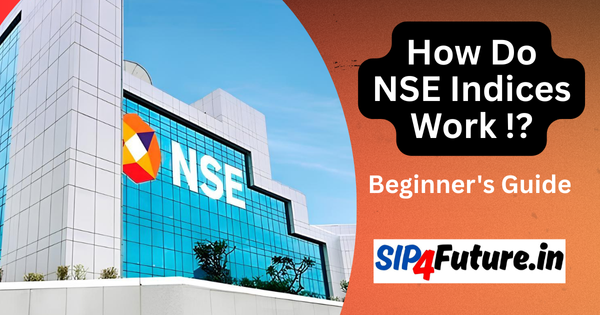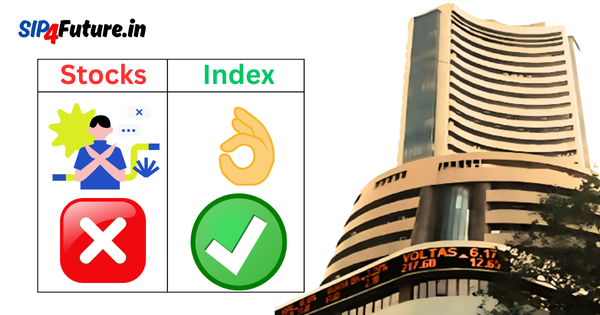The State Bank of India (SBI), India’s largest public sector bank, is poised to announce its Q4 financial results for the fiscal year 2024-25 on May 3, 2025, during a crucial board meeting in Mumbai. This event will not only shed light on SBI’s performance for the January-March quarter but also outline its strategic plans for raising capital in FY 2025-26. With the stock trading at ₹797.75 on the National Stock Exchange (NSE) as of April 30, 2025, reflecting a 1.82% decline, investors are keenly awaiting insights into SBI’s financial health, dividend declarations, and fund-raising strategies. This article delves into SBI’s Q4 expectations, the implications of its capital-raising plans, and the broader market dynamics influencing its stock performance.
Why SBI’s Q4 Results Matter for Investors
SBI’s Q4 results are a critical barometer of the bank’s operational efficiency and its ability to navigate India’s evolving economic landscape. As the backbone of the Indian banking sector, SBI commands a market capitalization of approximately ₹7,14,148.1 crore, making it a bellwether for the financial industry. The upcoming results will provide clarity on key metrics such as net interest income (NII), net profit, loan growth, and asset quality, all of which are pivotal for assessing the bank’s resilience amid global and domestic economic challenges.
What to Expect from SBI’s Financial Performance
Analysts project a robust performance for SBI in Q4 FY 2024-25, driven by strong loan growth and stable net interest margins (NIM). According to posts on X, SBI’s loan growth is forecasted at 13%-14% for FY 2025, with NIM expected to range between 2.9% and 3.2%. These projections align with SBI’s historical ability to capitalize on India’s growing credit demand, particularly in retail and corporate lending segments. The bank’s cost-to-income ratio is anticipated to normalize between 54% and 57%, reflecting operational efficiency.
| Key Financial Metrics | Q4 FY 2024-25 Forecast | Previous Year (Q4 FY 2023-24) |
|---|---|---|
| Loan Growth | 13%-14% | 15.2% |
| Net Interest Margin (NIM) | 2.9%-3.2% | 3.3% |
| Cost-to-Income Ratio | 54%-57% | 55.8% |
| Return on Assets (RoA) | 0.9%-1.1% | 1.0% |
The bank’s asset quality remains a focal point, with analysts noting stable non-performing assets (NPAs) in recent quarters. In Q4 FY 2023-24, SBI reported a standalone net profit of ₹20,698 crore, a 24% year-on-year increase, driven by lower provisions and strong credit growth. Investors will be watching whether SBI can sustain this momentum, especially given the pressures of rising interest rates and global economic uncertainties.
How Government Policies Impact SBI’s Stock Price
Government decisions play a significant role in shaping SBI’s stock performance, given its status as a public sector undertaking (PSU). Recent policy measures, such as the government’s push for financial inclusion and digital banking, have bolstered SBI’s retail banking segment. For instance, initiatives like the Pradhan Mantri Jan Dhan Yojana have expanded SBI’s customer base, contributing to deposit growth. Conversely, regulatory changes, such as the Reserve Bank of India’s (RBI) tightened provisioning norms, could impact profitability by increasing capital requirements.
The government’s recent announcement to potentially raise the minimum pension under the Employees’ Pension Scheme (EPS) to ₹3,000 per month could indirectly benefit SBI by boosting disposable income for retail customers, thereby driving loan demand. However, any adverse fiscal policy, such as increased taxation or reduced public spending, could dampen economic growth and, consequently, SBI’s lending portfolio.
What Fund-Raising Options Is SBI Exploring?
SBI’s board meeting on May 3, 2025, will also focus on capital-raising strategies to support its growth ambitions in FY 2025-26. The bank is considering multiple avenues, including a Follow-on Public Offer (FPO), Rights Issue, and Qualified Institutional Placement (QIP). These methods aim to strengthen SBI’s capital adequacy ratio, which is critical for meeting Basel III norms and funding its expanding loan book.
How Will Fund-Raising Shape SBI’s Future?
Raising fresh capital is essential for SBI to sustain its loan growth trajectory and invest in digital infrastructure. An FPO would allow SBI to tap into a broad investor base, while a Rights Issue would enable existing shareholders to participate in the capital infusion. A QIP, on the other hand, would target institutional investors, offering a quicker route to raise funds. According to a post on X, SBI’s fund-raising plans align with similar moves by peers like Axis Bank and IDFC First Bank, signaling optimism in the banking sector.
| Fund-Raising Method | Pros | Cons |
|---|---|---|
| Follow-on Public Offer (FPO) | Broad investor participation, enhances market visibility | Time-consuming, market-dependent pricing |
| Rights Issue | Loyal shareholder base, lower dilution for non-participants | Limited to existing shareholders, may depress stock price |
| Qualified Institutional Placement (QIP) | Fast execution, attracts institutional investors | Higher dilution, limited retail participation |
The choice of fund-raising method will depend on market conditions and SBI’s strategic priorities. A successful capital raise could bolster investor confidence, potentially driving the stock price higher, especially if paired with strong Q4 results.
When Will SBI Declare Its Dividend?
SBI’s board is likely to consider a dividend declaration for FY 2024-25 during the May 3 meeting. Historically, SBI has maintained a consistent dividend policy, balancing shareholder returns with capital retention for growth. In FY 2023-24, SBI declared a dividend of ₹11.30 per share, reflecting its robust earnings. Analysts expect a similar or slightly higher dividend for FY 2024-25, contingent on the bank’s profitability and capital needs post-fund-raising.
How Dividends Influence Investor Sentiment
Dividends are a key attraction for SBI’s retail and institutional investors, signaling financial stability and management’s confidence in future earnings. A higher dividend could offset concerns about stock price volatility, particularly in a market grappling with global uncertainties. Investors can track SBI’s dividend announcements on the Bombay Stock Exchange (BSE) for real-time updates.
Sectoral and Global Market Influences on SBI’s Stock
SBI’s stock performance is intricately linked to the broader banking sector and global market dynamics. The banking sector has faced headwinds in 2025, with the Nifty Bank Index experiencing volatility due to global trade tensions and tariff concerns. A recent report from Moneycontrol highlighted a 5% intraday plunge in the Nifty50, marking its worst performance since June 2024, driven by fears of stagflation and U.S. recession risks. These factors have indirectly pressured SBI’s stock, contributing to its 1.82% decline on April 30, 2025.
How Banking Sector Trends Affect SBI
The banking sector’s performance is closely tied to interest rate cycles and credit demand. The RBI’s decision to maintain elevated interest rates to curb inflation has squeezed banks’ NIMs, as seen in SBI’s projected NIM range of 2.9%-3.2% for FY 2025. However, SBI’s diversified loan portfolio, spanning retail, agriculture, and corporate segments, provides a buffer against sector-specific risks. Peers like Yes Bank, which reported a 63% rise in Q4 net profit to ₹738 crore, demonstrate the sector’s resilience, offering a positive backdrop for SBI’s results.
What Global Market Scenarios Mean for SBI
Global market conditions, particularly U.S. monetary policy and trade tariffs, significantly impact SBI’s stock. The U.S. Federal Reserve’s stance on interest rates influences foreign institutional investor (FII) flows into Indian markets. As of March 31, 2025, FII holdings in Yes Bank decreased marginally, reflecting cautious sentiment that could extend to SBI. Additionally, falling crude oil prices, as noted by The Economic Times, could ease inflation pressures in India, supporting SBI’s retail lending growth by enhancing consumer spending power.
Historical Performance and Future Targets
SBI’s stock has delivered steady returns over the years, underpinned by its dominant market position and operational scale. Over the past five years, SBI’s stock has grown at a compound annual growth rate (CAGR) of approximately 12%, outperforming many PSU peers. However, short-term volatility, driven by global uncertainties, has tempered gains in 2025.
What Research Institutes Predict for SBI’s Stock
Analysts remain cautiously optimistic about SBI’s stock, citing its strong fundamentals and growth potential. Below are target prices suggested by leading research institutes for SBI’s stock as of April 2025:
| Research Institute | Target Price (₹) | Recommendation | Time Horizon |
|---|---|---|---|
| Motilal Oswal | 920 | Buy | 12 months |
| ICICI Securities | 880 | Buy | 12 months |
| Emkay Global | 850 | Hold | 6 months |
| Kotak Institutional Equities | 900 | Buy | 12 months |
These targets reflect confidence in SBI’s ability to sustain loan growth, improve asset quality, and leverage digital banking initiatives. However, risks such as geopolitical tensions and domestic policy changes could impact these projections.
How Historical Returns Inform Investor Decisions
SBI’s historical returns provide context for its long-term investment appeal. The table below summarizes the stock’s performance over different time frames:
| Time Period | Return (%) | Key Drivers |
|---|---|---|
| 1 Year (2024-25) | 8.5% | Loan growth, stable NPAs |
| 3 Years (2022-25) | 35.2% | Economic recovery, digital banking |
| 5 Years (2020-25) | 62.4% | Market leadership, policy support |
Investors should weigh these returns against market risks, including interest rate fluctuations and global economic slowdowns, when evaluating SBI’s stock.
SBI’s Q4 results and fund-raising plans present both opportunities and challenges. On the upside, strong loan growth, stable asset quality, and government-backed initiatives position SBI for sustained growth. The bank’s digital transformation, including its YONO platform, has enhanced customer engagement, driving deposit and loan growth. However, risks such as rising interest rates, global trade disruptions, and regulatory changes could pressure profitability.
How Investors Can Approach SBI’s Stock
For long-term investors, SBI’s stock offers a compelling blend of growth and value, supported by its market leadership and dividend yield. Short-term traders, however, should remain vigilant about macroeconomic developments and sector-specific trends. Monitoring updates on Moneycontrol and NSE can provide real-time insights into SBI’s stock movements.
Conclusion
The State Bank of India stands at a pivotal juncture as it prepares to unveil its Q4 FY 2024-25 results and outline its fund-raising strategy for FY 2025-26. With a robust financial outlook, strategic capital-raising plans, and a resilient banking sector backdrop, SBI is well-positioned to navigate domestic and global challenges. Investors should closely watch the May 3 board meeting for insights into SBI’s earnings, dividend policy, and growth trajectory. While short-term volatility may persist, SBI’s long-term fundamentals remain strong, making it a cornerstone of India’s financial landscape.
Disclaimer: The information provided in this article is for educational purposes only and should not be construed as financial or investment advice. Investing in the stock market involves risks, and past performance is not indicative of future results. Always conduct thorough research and consult with a qualified financial advisor before making investment decisions.




